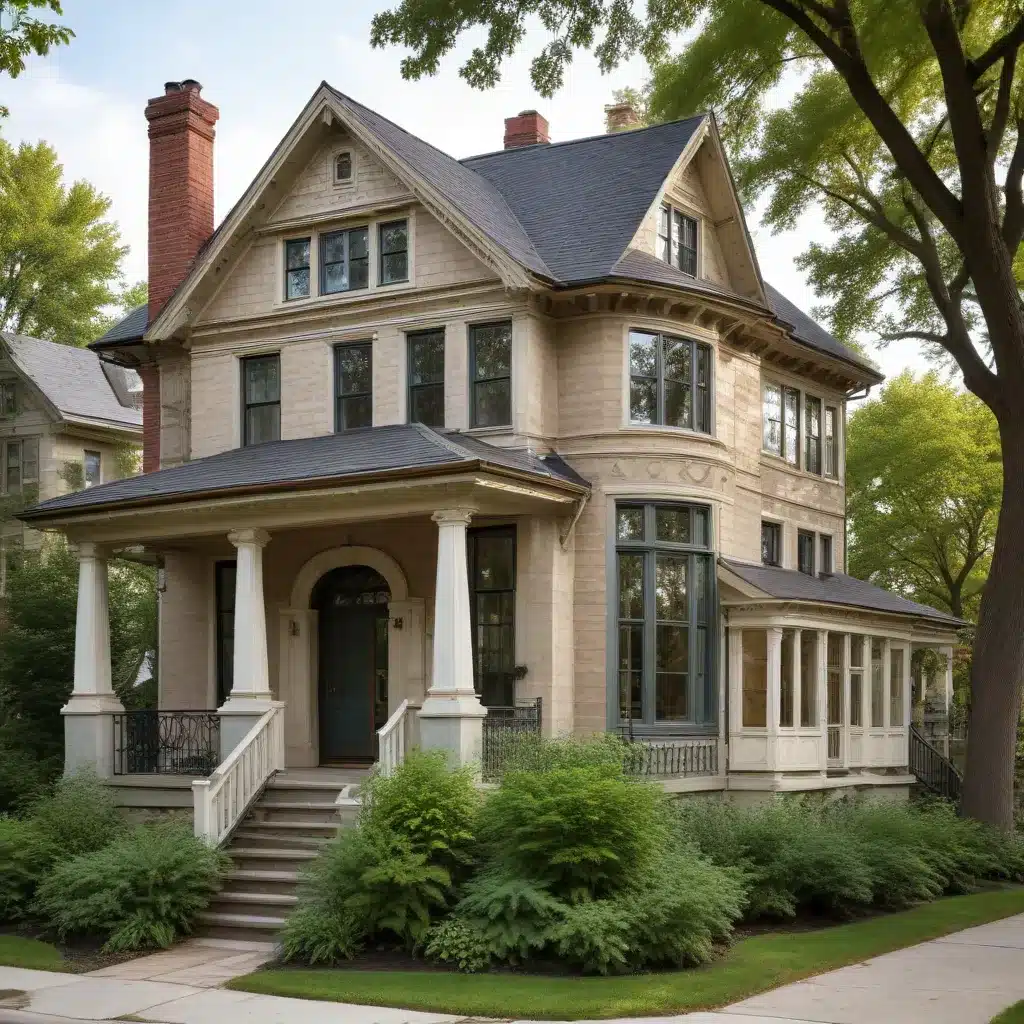
Renovating a historic home is a unique challenge that requires a delicate balance between preserving the original charm and incorporating modern amenities. These homes, with their distinctive architectural details and storied pasts, offer a glimpse into another era. However, making them functional for today’s lifestyle involves thoughtful planning and a deep respect for their history.
Preservation Principles
Maintaining Original Character: Before starting any renovation project, it’s essential to understand the home’s history. Research the architectural style, original builders, and previous owners to gain insights into the design and construction techniques used. This knowledge can guide your renovation decisions, ensuring that changes respect the home’s original character. Historical societies, local libraries, and previous owners can be valuable resources in this discovery phase.
One of the primary appeals of historic homes is their unique architectural details—crown molding, hardwood floors, stained glass windows, and intricate woodwork. Preserving these elements is crucial in maintaining the home’s character. If these features are in good condition, they should be restored and highlighted. In cases where they are damaged or missing, it’s possible to have replicas made by skilled artisans. Retaining these details helps preserve the authenticity of the home.
Sensitive Modernization Approaches: While preserving historical charm is essential, so is updating the home to meet modern living standards. This often includes upgrading the electrical and plumbing systems, enhancing insulation, and installing modern HVAC systems. These updates can be done discreetly to maintain the home’s original aesthetic. For instance, modern wiring can be hidden behind walls, and ductwork can be designed to blend with the home’s architecture. The goal is to make the home comfortable and efficient without compromising its historical integrity.
Reversible Design Interventions: When renovating a historic home, the materials used can significantly impact the final result. Opt for materials that match or complement the original construction. This includes using reclaimed wood, historically accurate paint colors, and period-appropriate fixtures. Modern materials that mimic the appearance of traditional ones can also be a practical choice. The aim is to ensure any new additions blend seamlessly with the old, creating a cohesive look that respects the home’s past.
Architectural Elements
Facade Upgrades: The exterior of a historic home is just as important as the interior. Preserving the façade is crucial in maintaining the home’s curb appeal and historical significance. This might involve restoring original siding, windows, and roofing materials. Any additions, such as decks or porches, should be designed to complement the existing architecture. Landscaping should also reflect the period style of the home, using traditional plants and garden layouts.
Interior Spatial Reconfiguration: Historic homes often have layouts that don’t suit modern living. Small, closed-off rooms may need to be opened up to create a more functional space. However, it’s important to make these changes thoughtfully. Retain as much of the original layout as possible, and when walls need to be removed, consider using features like pocket doors or glass partitions that can maintain a sense of the original structure while enhancing functionality.
Mechanical System Modernization: While preserving the historical charm is essential, updating the home’s systems is equally crucial. Upgrading the electrical, plumbing, and HVAC systems can significantly improve the home’s energy efficiency and livability. These updates should be done discreetly, with a focus on blending the new with the old. For example, modern wiring can be hidden behind walls, and ductwork can be designed to complement the home’s architectural features.
Material Considerations
Sustainable Material Selection: When renovating a historic home, it’s essential to choose materials that are not only period-appropriate but also eco-friendly. This might include using reclaimed wood, low-VOC paints, and energy-efficient windows. These sustainable choices not only preserve the home’s character but also contribute to its overall environmental impact.
Historic Material Restoration: In some cases, the original materials in a historic home may be in need of repair or restoration. Working with skilled artisans or conservation experts can help revive these elements, ensuring they continue to showcase the home’s unique character. This might involve refinishing original hardwood floors, repairing intricate plasterwork, or restoring historic light fixtures.
Blending New with Old: Incorporating modern materials and design elements can be a delicate balance when renovating a historic home. The goal is to ensure that any new additions or updates seamlessly integrate with the existing architecture. This might involve using reclaimed wood for new built-ins, selecting period-inspired light fixtures, or incorporating energy-efficient appliances that complement the home’s aesthetic.
Design Strategies
Adaptive Reuse Concepts: When renovating a historic home, it’s essential to consider how the space can be repurposed to meet modern needs. This might involve converting unused attic spaces into cozy guest rooms, transforming historic outbuildings into home offices, or reimagining underutilized rooms as multipurpose family spaces.
Contextual Additions: Any additions or expansions to a historic home should be designed with the utmost respect for the original architecture. This might involve constructing a detached garage that echoes the home’s style or building a rear addition** that is sympathetic in scale and materials.
Minimalist Interventions: In some cases, the best approach to renovating a historic home is to make minimal changes, focusing on preserving the existing character. This might involve updating the kitchen with period-appropriate cabinetry and vintage-inspired appliances or enhancing the insulation without altering the home’s exterior.
Renovating a historic home is a rewarding endeavor that allows homeowners to enjoy modern comforts while preserving a piece of history. By understanding the home’s history, preserving architectural details, incorporating modern amenities discreetly, choosing appropriate materials, making thoughtful layout changes, maintaining exterior integrity, and working with experienced professionals, you can achieve a balance between old and new. To learn more about historic home renovations, visit https://www.reluctantrenovator.com.



